Christina L. Simms, Conservator of Objects and Sculpture, recently completed a Doughboy conservation treatment in Forest City, Pennsylvania. “Doughboy” is a term often used as a nickname for American troops deployed to Europe during World War I, though the exact origin of the term is not known.
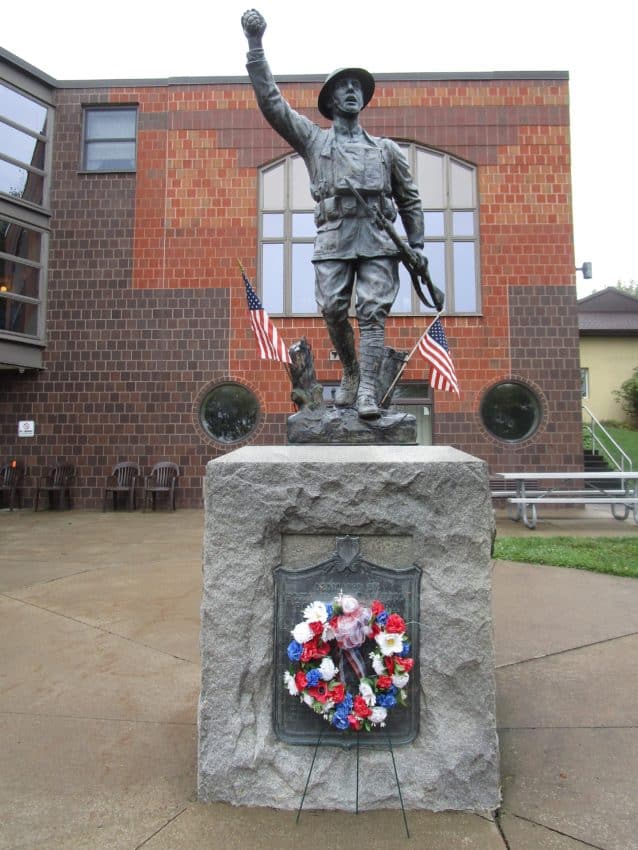
The Doughboy treated by conservator Christina L. Simms is known as The Spirit of the American Doughboy copyrighted in 1920 by artist Ernest Moore Viquesney. The sculpture is installed off of Main Street in front of the William Penn Apartments. It was made possible by the Post No. 524 American Legion and serves as a memorial to those from the area who fought in World War I to the Vietnam War .
It features a young male soldier holding a grenade in the hand of his raised right arm and a bayoneted rifle in the other hand. He wears a uniform typical of an American solider during World War I. The figure appears to be in motion, perhaps traversing through a battle zone as indicated by the two stumps and barbed wire coiled around the base. The Doughboy sculpture has been filled with cement or concrete, as with many other similar sculptures around the country, probably when it was first installed to keep the hollow artwork in place.
The Doughboy statues were mass produced from pressed copper-alloy sheet in many separate parts then brazed together. Due to the production method they were more affordable than cast bronze or stone. Over 100 of the commemorative figures were sold and erected throughout America during the first half of the 20th century. There are different versions, and some of the statues are made from cast zinc.
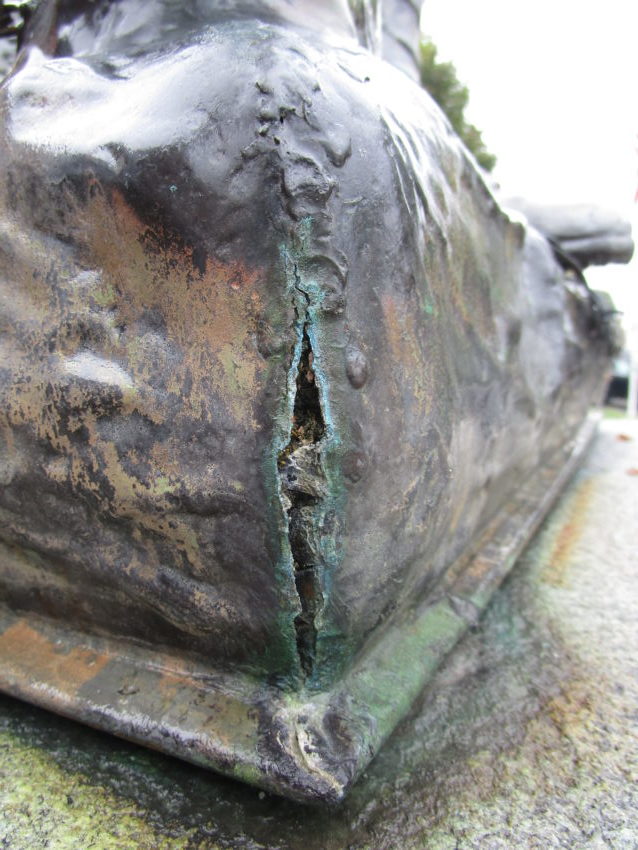
Before the Doughboy conservation treatment, the sculpture was in unstable condition with split seams, surface corrosion, and failed protective coatings. Three seams were found to be split on the proper right front corner of the base, on the side of the stump directly above the split corner, and an area on the back of the base near the proper left stump.
The broken seams are probably caused from moisture collecting in the cement filling which then expands and contracts during freeze/thaw cycles, splitting the thin sheet metal. The cement was wet and appeared to be actively deteriorating. Minor dents were observed on the back of the calves and top of the helmet.
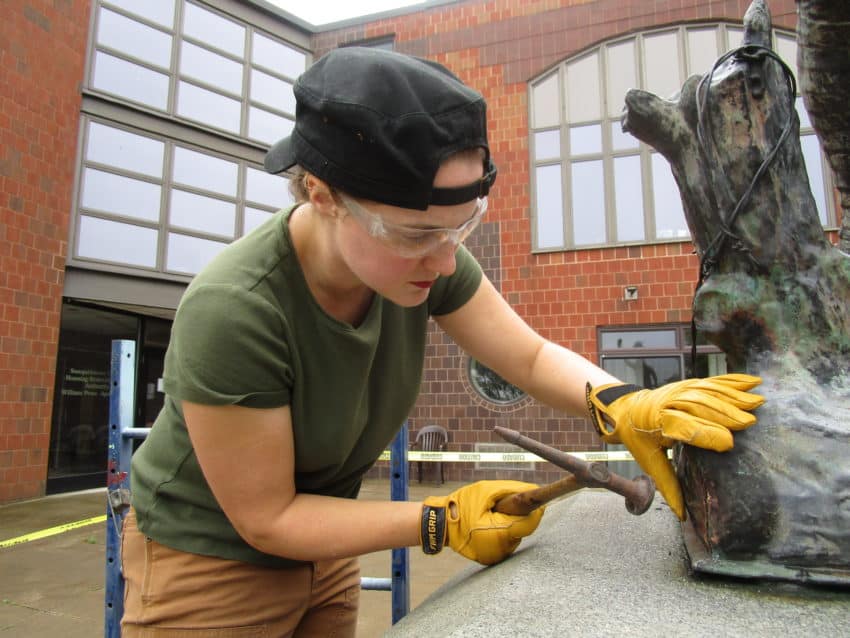
At the time of fabrication, the sculpture would have been originally the color of the copper-alloy sheet then likely coated before it was installed outdoors. The metal would have then naturally oxidized or darkened with age or exposure. While the current color of the sculpture is typical of other Doughboy sculptures displayed outdoors, the surface is mottled since the protective coatings were not maintained and there are areas of blue-green corrosion. These failing coatings are visible on the surface as areas of blanching.
The Doughboy restoration began with repairing the cracks by brazing with oxyacetylene. Deteriorated cement filling was removed from the broken seams as possible. The metal was then annealed and conservator Simms hammered the metal in order to close the gaps. Oxidation was then manually removed from the surface. These efforts provided a clean surface and a tight seam that make brazing the cracks possible.
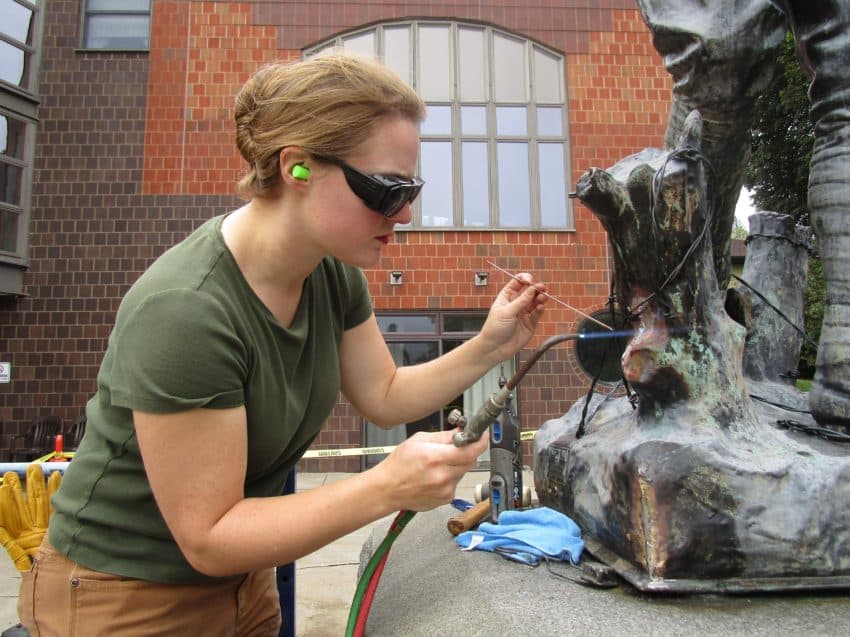
Conservator Simms carefully brazed the three cracks. The split corner and cracked area on the back of the base were challenging since they had been previously repaired with dissimilar materials. These areas were brazed as possible then chased back. Commercially available patina chemicals were applied cold (or at ambient temperature) to the repaired surfaces so they once again matched the color of the surrounding metal.
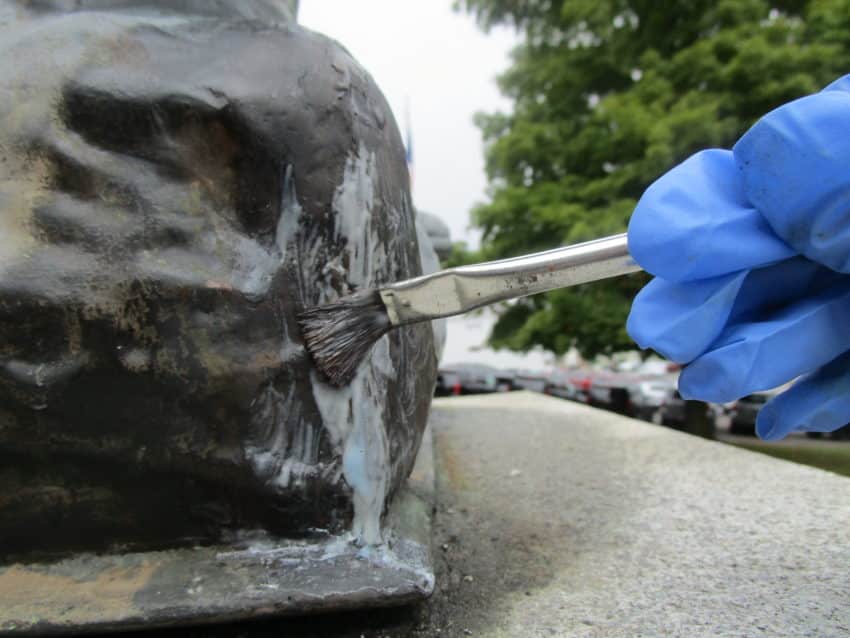
The Doughboy conservation treatment continued by using a pressure washer to remove dirt, debris, and friable coating material by Conservation Assistant, Curtis McCartney. It was apparent during the Doughboy restoration that several areas of the sculptures were holding water: the backpack, hand of the solider, butt of the rifle, and canteen.
A small hole was drilled into these areas to allow water to drain. While it might seem like an invasive step, it can be necessary for the preservation of the sculpture. The drain holes alleviate water ingress into the base of the sculpture, and in turn, prevent or lessen the extent of future cracks.
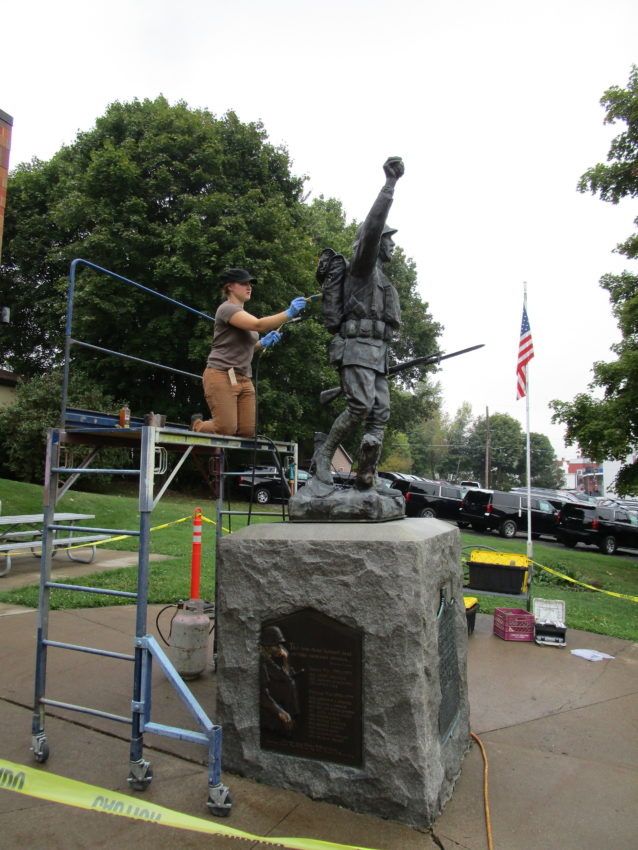
As a final step an application of a protective wax coating was applied with heat. The plaques also received an application of wax. Once dry, the waxed surfaces were all buffed to an even sheen with microfiber cloths .
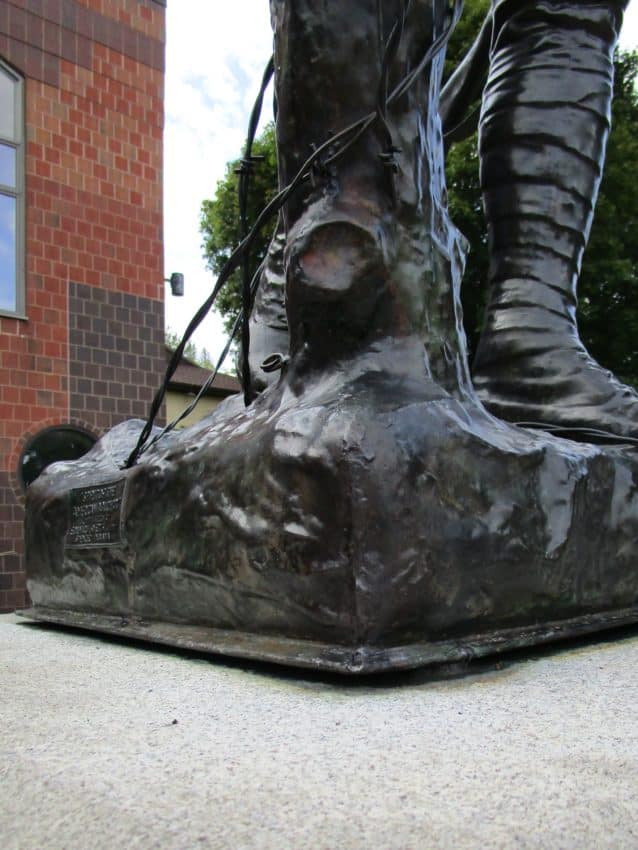
After the Doughboy conservation treatment, the brazed cracks match original or previously restored seams. The surface and corrosion are saturated with the wax coating which protects the metal and creates an overall even appearance. The wax coating will last 3 to 5 years before renewal is required, depending on weather conditions and public interaction.

